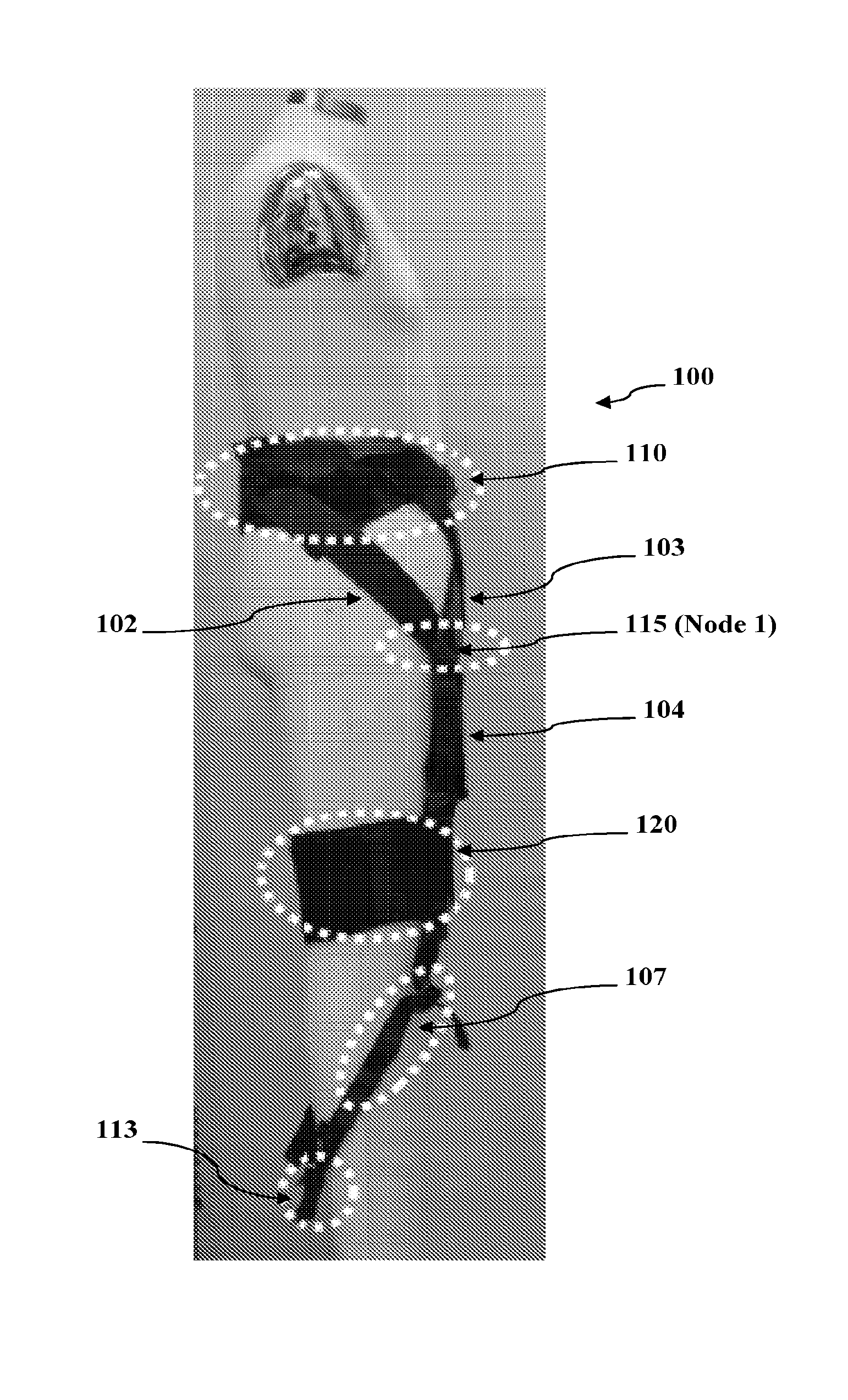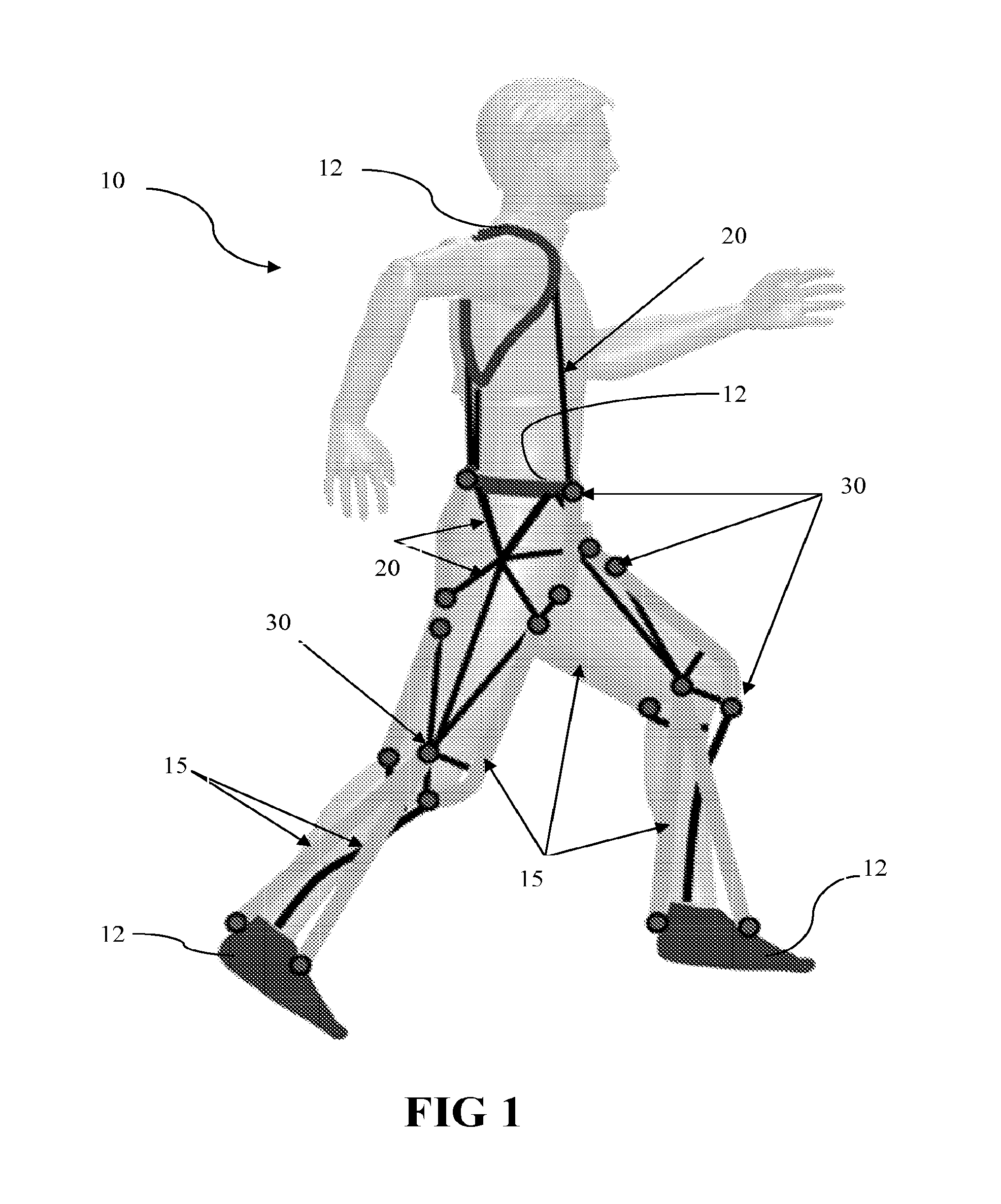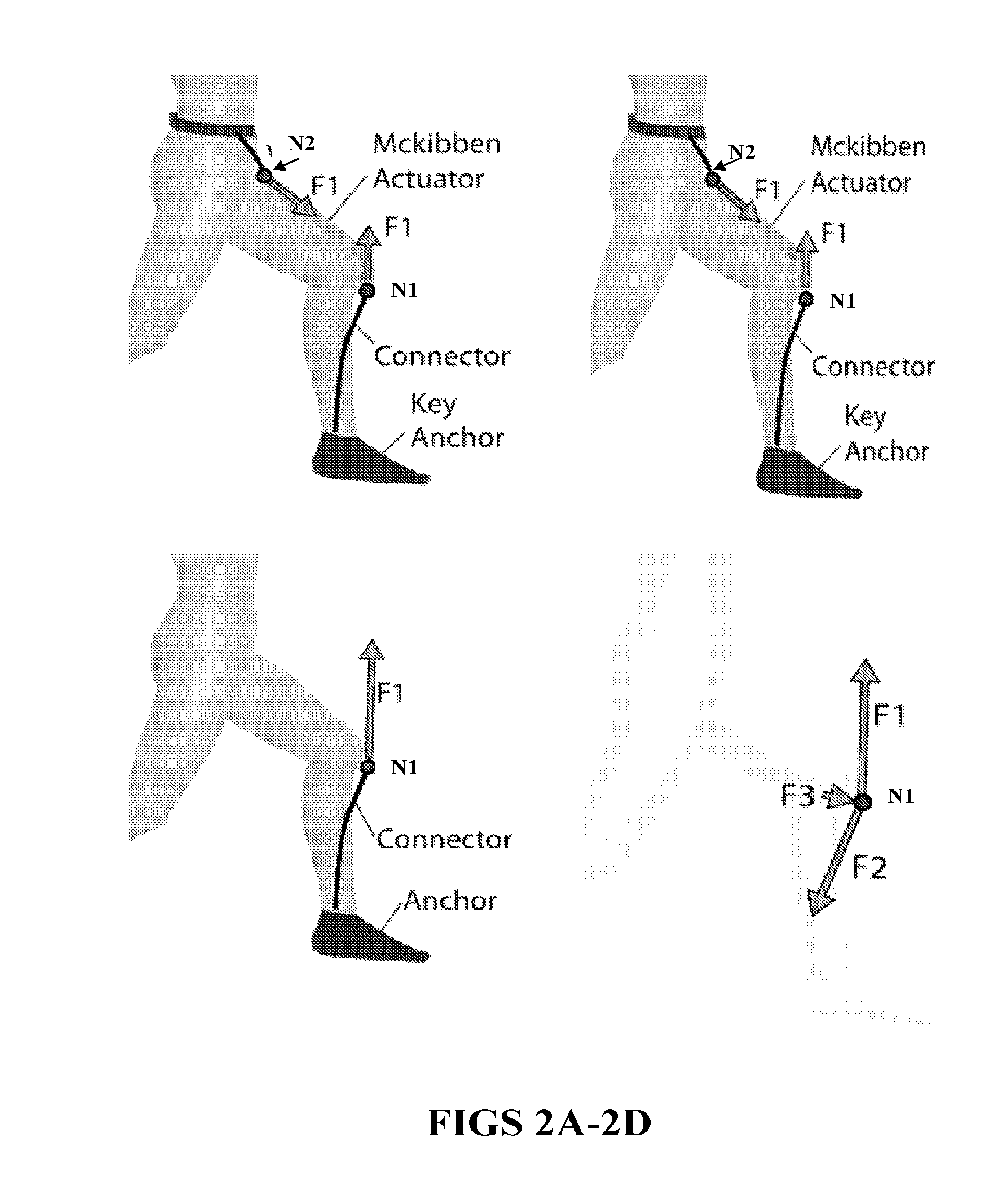Soft exosuit for assistance with human motion
a technology of human motion and soft suit, which is applied in the field of human assisted motion methods and systems, can solve the problems of increasing reducing the risk of injury, and restricting the user's movement, so as to reduce the metabolic consumption of energy, reduce the risk of injury, and reduce the load on the soft tissue
- Summary
- Abstract
- Description
- Claims
- Application Information
AI Technical Summary
Benefits of technology
Problems solved by technology
Method used
Image
Examples
Embodiment Construction
[0108]The present invention is directed to a soft exosuit system that can be used in combination with an actuator system to provide active assistance with natural motions, such as walking, running, stepping up, stepping down, etcetera.
[0109]In contrast with prior art rigid exoskeletons, the soft exosuit in accord with the present concepts utilizes flexible materials and actuators to specifically address the human factors challenges associated with exoskeleton devices and does not have a load bearing exoskeleton, but rather relies on the user's biological skeleton to assist with the application of forces and transfer of load.
[0110]The soft exosuit greatly reduces the mechanical impedance and kinematic restrictions compared to traditional exoskeletons with rigid components and does not significantly constrain or restrict the user's degrees of freedom. With such a system, it is possible to add controlled impulses of energy (e.g., during key portions of the gait cycle), rather than dire...
PUM
 Login to View More
Login to View More Abstract
Description
Claims
Application Information
 Login to View More
Login to View More - R&D
- Intellectual Property
- Life Sciences
- Materials
- Tech Scout
- Unparalleled Data Quality
- Higher Quality Content
- 60% Fewer Hallucinations
Browse by: Latest US Patents, China's latest patents, Technical Efficacy Thesaurus, Application Domain, Technology Topic, Popular Technical Reports.
© 2025 PatSnap. All rights reserved.Legal|Privacy policy|Modern Slavery Act Transparency Statement|Sitemap|About US| Contact US: help@patsnap.com



